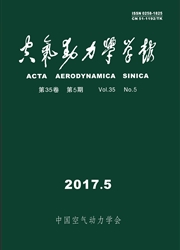

 中文摘要:
中文摘要:
基于工程上广泛使用的Park模型构造了一种新的远场尾流计算模型,同时又提出了一种CFD与制动盘理论相结合的方法对单个风力机远尾迹区的流动状况进行了数值模拟。新的尾流计算模型是由一维Park模型进行三角函数修正得到的,CFD方法是结合制动盘理论使用FLUENT提供的Fan边界数值求解整个尾流流场。给出了单台风力机尾流中风轮中心的轴向速度分布以及风力机下游不同位置处的径向速度分布,并与风洞实验结果以及Park模型的计算结果进行分析对比,表明本文的两种计算方法都能够较好地捕捉尾流的流场特性。由于新的远场尾流计算模型较之原Park模型能够更准确地反映径向尾流分布,且计算量非常小,因此可作为工程开发的有效工具。制动盘理论结合CFD的方法也能够在计算量相对较小的情况下,准确的反映远尾流的流场信息,这两种方法都可为风场微观选址和风力机排布提供参考依据。
 英文摘要:
英文摘要:
A new far wake model is established in this paper, and a CFD method which combining the actuator disc methodology is also employed to investigate numerically the behavior of wake behind a single wind turbine. The new wake model is builded using classical Park model and made some trigonometric correction. The CFD simulations which using the commercial software Fluent code are based on Fan boundary condition. The velocity deficit on the wake centerline is presented here and crosswind profiles of mean velocity at hub height for three tip ratios are also shown. Comparation among the simulation results , the wind tunnel results and the predictions obtained from Park model for a single wind turbine, proved that results of this paper revealing the turbine wake phenomenon somewhat. The successful computation of the problems shows that the new wake model with more accuracy and less computing cost can be used as an ef- fective tool in engineering. The CFD method also reflect the flow field information accurately. Both the two methods can be used as an evaluation method for the micro-sitting and the optimization in placement of wind turbines within wind farm.
 同期刊论文项目
同期刊论文项目
 同项目期刊论文
同项目期刊论文
 期刊信息
期刊信息
